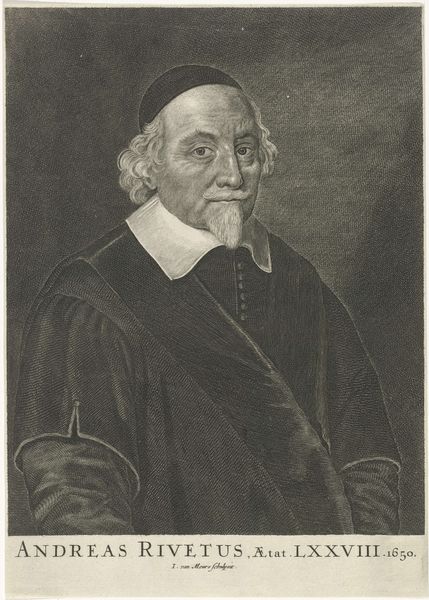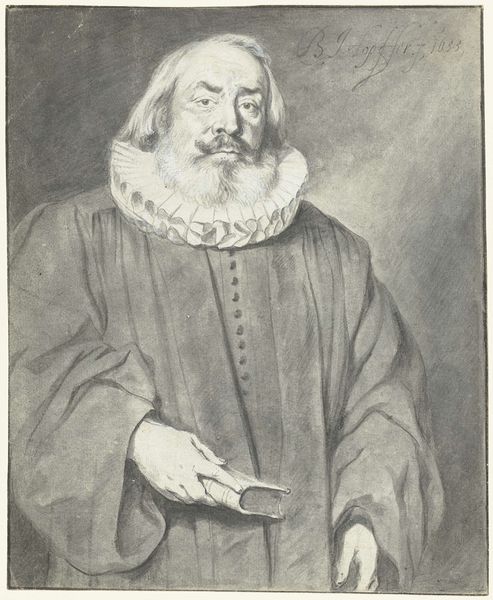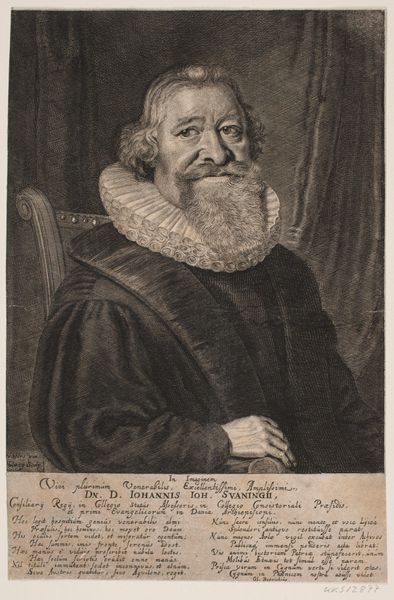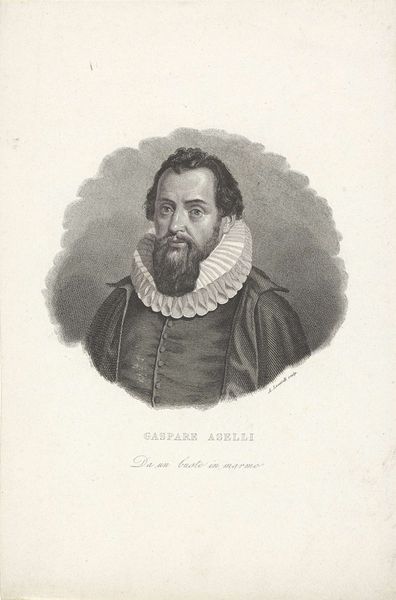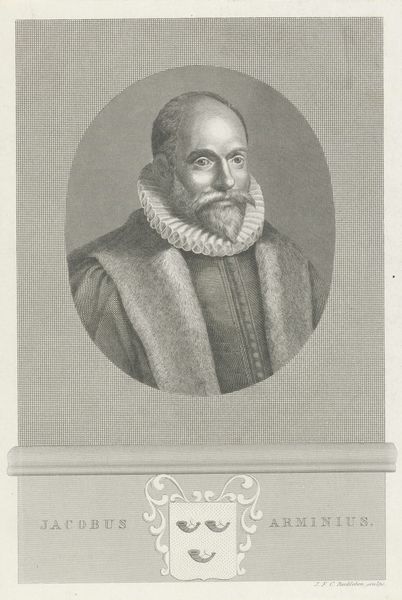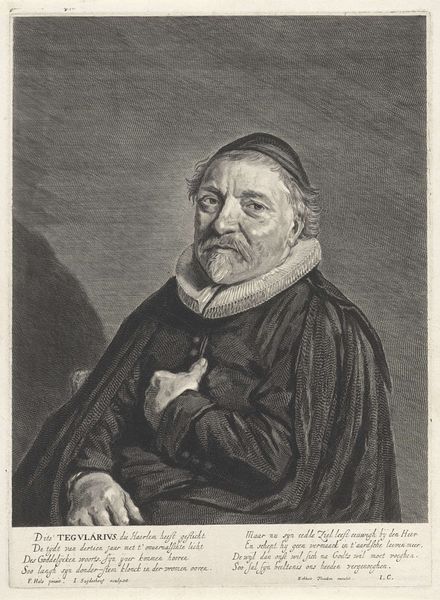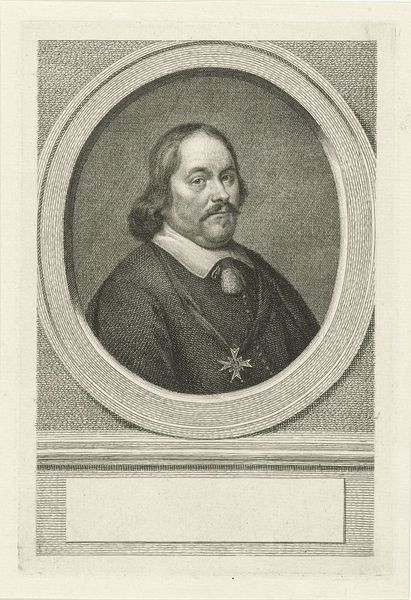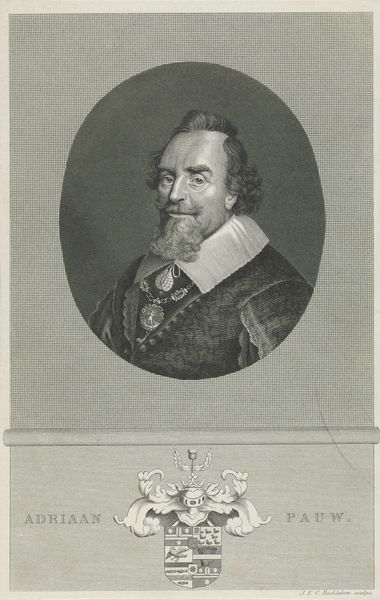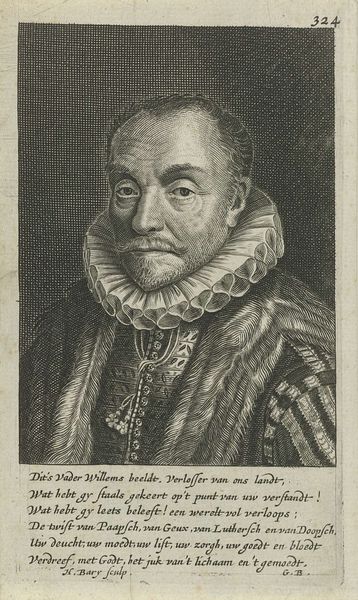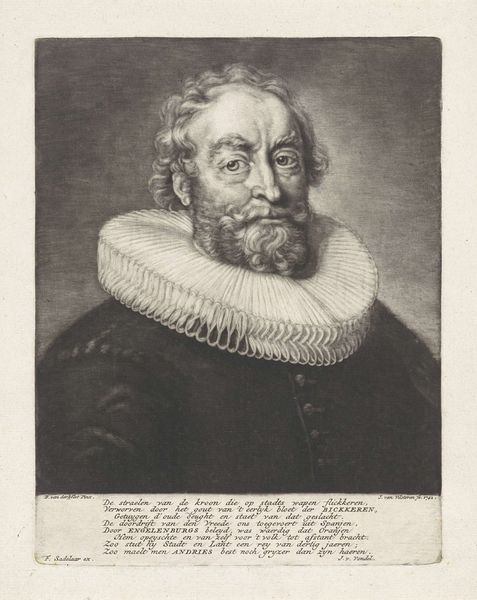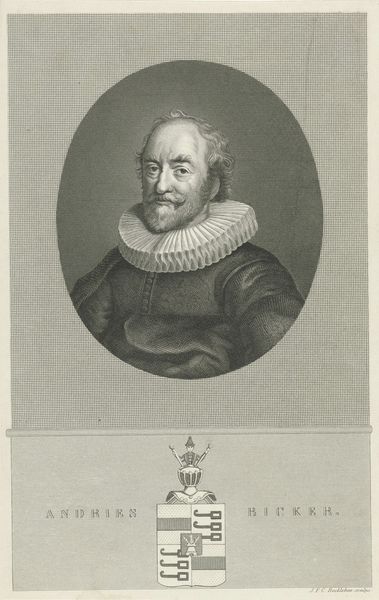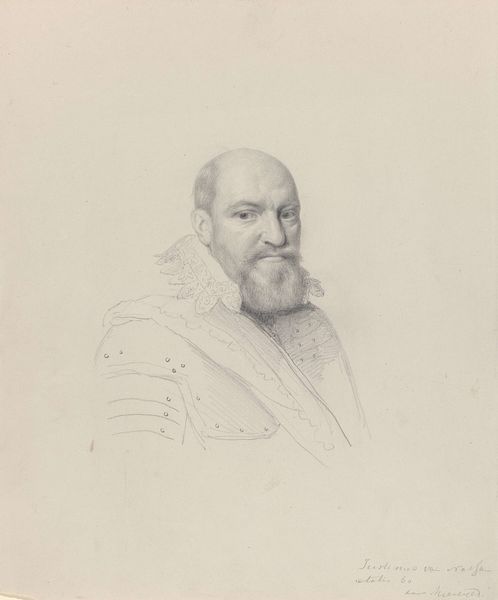
Fotoreproductie van een schilderij van Carel Fabritius, Portret van de Amsterdamse zijdekoopman Abraham de Potter c. 1900 - 1940
0:00
0:00
oil-paint, photography
#
portrait
#
portrait image
#
dutch-golden-age
#
oil-paint
#
photography
#
portrait reference
#
realism
Dimensions: height 195 mm, width 164 mm
Copyright: Rijks Museum: Open Domain
This is a photogravure reproduction by Bernard Eilers, created sometime in the early 20th century, of Carel Fabritius's "Portrait of Abraham de Potter." The composition is immediately striking: a tightly framed, bust-length portrait rendered in sepia tones. The sitter's dark cloak and backdrop contrast with the bright, meticulously detailed ruff, creating a strong visual anchor. Eiler’s choice of photogravure, a process known for its tonal range and rich texture, adds a layer of depth, almost mimicking the qualities of an old master painting. The formal arrangement here invites a semiotic interpretation. The somber palette and precise lines evoke a sense of gravity and introspection, typical of Dutch Golden Age portraiture. But Eiler's work isn't just reproductive; it's interpretive. By translating paint into photography, he engages with ideas of authenticity and reproduction, themes that preoccupied thinkers like Walter Benjamin. Consider the texture: the photogravure process gives the image a tactile quality, a kind of haptic visuality that draws us in. This texture functions not merely aesthetically but as a signifier of history, of layers of interpretation and representation.
Comments
No comments
Be the first to comment and join the conversation on the ultimate creative platform.

